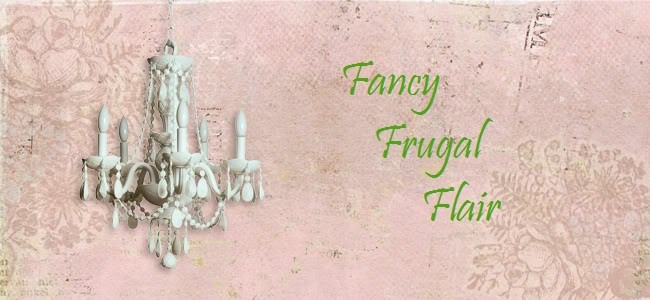
 This random treasure of a plantation shutter was discovered at the Habitat for Humanity ReStore several months ago. I had no idea what I would do with it, I just liked it and it was $2. So even if I tossed it, no biggie. I finally decided that it would make nice doors to a corner cabinet/table. With the assistance of my lovely power-tool saavy husband, we made this in about an hour and a half. Hubby cut 2 pieces of "nice" plywood (it wasn't what I expected when he said plywood) the same length & width of the shutters. He already had the wood from another project he did. We joined the 2 plywood sides with screws at a 90 degree angle. The shutters already had a hinge on one side, so we joined the shutters to the plywood with the pre-existing hinge. He cut the top & bottom pieces, each extending about a half inch over the soon-to-be cabinet sides. I sanded and routered the edges of the top & bottom pieces to give them a little curve. Then I pained them an off-white color.
This random treasure of a plantation shutter was discovered at the Habitat for Humanity ReStore several months ago. I had no idea what I would do with it, I just liked it and it was $2. So even if I tossed it, no biggie. I finally decided that it would make nice doors to a corner cabinet/table. With the assistance of my lovely power-tool saavy husband, we made this in about an hour and a half. Hubby cut 2 pieces of "nice" plywood (it wasn't what I expected when he said plywood) the same length & width of the shutters. He already had the wood from another project he did. We joined the 2 plywood sides with screws at a 90 degree angle. The shutters already had a hinge on one side, so we joined the shutters to the plywood with the pre-existing hinge. He cut the top & bottom pieces, each extending about a half inch over the soon-to-be cabinet sides. I sanded and routered the edges of the top & bottom pieces to give them a little curve. Then I pained them an off-white color.
I don't know how well it shows up in my pictures, but there was a little knob and latch on one side of the shutters. While they aren't really functional, I thought they added to the look, so I spray painted them a brushed bronze & put them back on. We are planning to add a shelf or 2 to the inside, so I didn't bother painting the inside yet. I also need to get a magnetic latch so the door will be secure when I shut it. Overall, for starting some stuff that we had laying around, I think we ended up with a pretty nice corner cabinet for our bathroom. It conceals the ugly stuff, like extra TP & cleaning supplies. Total cost of this project: $2 plantation shutters, $3 for a sample size of flat ivory paint, I'm going to guess $10 for the plywood, power-tool know-how from my hubby (free!). Bonus for the quality time spent building something with a loved one. :-)






 I bought 13 bags of green Spanish moss at Walmart for $2.50/bag. I had some left over, but I'll use it for
I bought 13 bags of green Spanish moss at Walmart for $2.50/bag. I had some left over, but I'll use it for 
























